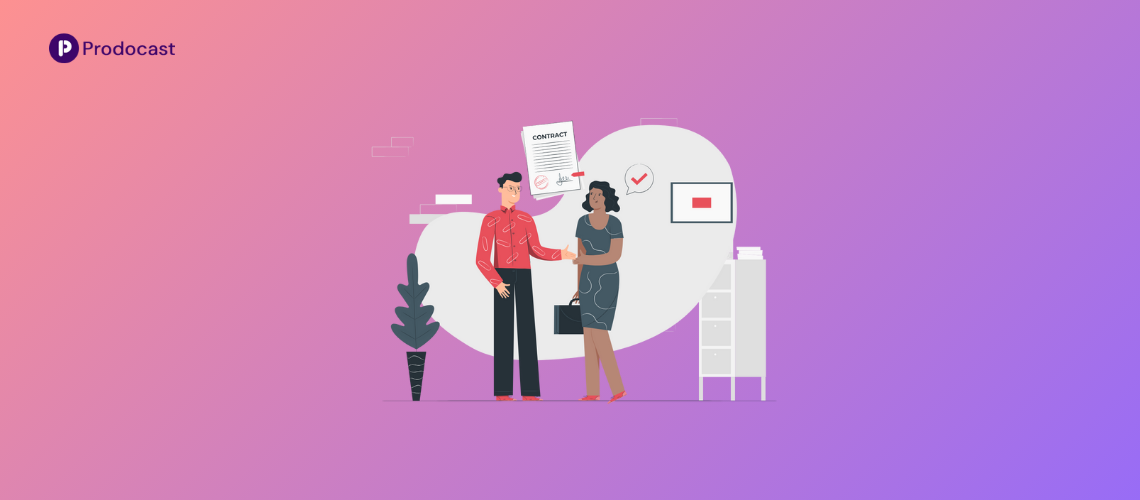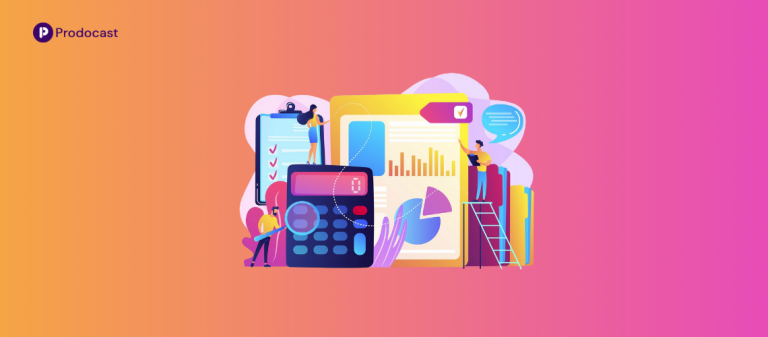Customer onboarding is a crucial step in the customer journey. It’s where first impressions are solidified, customer expectations are managed, and the foundation for long-term relationships is built. Yet, many businesses still rely on manual processes or disjointed systems to onboard new customers, which can lead to confusion, frustration, and ultimately, customer churn.
Without a dedicated customer onboarding tool, businesses risk the following:
- Missed Engagement Opportunities: Customers might struggle to understand how to use the product or service, leading to low engagement.
- Inconsistent Experiences: Manual processes can result in inconsistent messaging and support, causing customers to feel unsupported.
- Increased Churn Rates: Customers who don’t see value quickly are likely to abandon the product.
- Inefficient Resource Allocation: Teams spend excessive time on repetitive tasks instead of focusing on strategic initiatives.
- Lack of Insights: Without proper tracking, businesses miss out on valuable data to improve their onboarding processes.
This blog will guide you through understanding customer onboarding software, its types, benefits, factors to consider when choosing a tool, and a detailed review of the top 10 software options for 2024.
What Is Customer Onboarding Software, and Why Is It Needed?
Customer onboarding software is a digital platform designed to streamline and enhance the process of introducing new customers to a product or service. These tools simplify the onboarding journey by automating repetitive tasks, providing interactive guidance, and offering analytics to measure success.
Why Businesses Need Onboarding Software
- Improved Customer Experience: Onboarding software ensures customers have the tools and resources they need to succeed, creating a seamless first impression.
- Faster Time-to-Value (TTV): By guiding users effectively, onboarding software helps them realize the product’s value quickly.
- Operational Efficiency: Automation reduces the workload on teams, allowing them to focus on strategic priorities.
- Scalability: Businesses experiencing rapid growth need a solution that can handle an increasing number of customers without compromising quality.
- Data-Driven Insights: Onboarding software tracks user behavior and provides actionable insights to improve processes.
Whether you’re a SaaS company, a service provider, or a retail business, onboarding software can bridge the gap between a customer signing up and achieving their first success.
Types of Customer Onboarding Software
Customer onboarding tools can be categorized based on their primary functionalities and use cases:
1. Interactive Guidance Tools
These tools focus on providing step-by-step assistance within the application. They guide users through workflows, ensuring they complete necessary tasks without confusion.
- Best For: Complex software systems with intricate features or configurations.
2. Task Management Tools
Designed to organize and automate the tasks involved in onboarding, these tools create structured workflows to ensure no step is missed.
- Best For: Teams managing multiple onboarding stages or working with high-touch clients.
3. In-App Messaging Platforms
These tools provide contextual help via notifications, chatbots, or tooltips, offering users assistance when and where they need it most.
- Best For: Businesses aiming to engage users in real time and offer proactive support.
4. Learning and Training Solutions
Focused on delivering educational content, these tools offer modules, videos, and quizzes to help users learn the product thoroughly.
- Best For: Companies with products requiring in-depth training or compliance needs.
5. Analytics and Feedback Tools
These platforms specialize in tracking user behavior, analyzing success metrics, and collecting feedback to refine the onboarding experience.
- Best For: Data-driven organizations seeking continuous improvement in their onboarding process.
Understanding these categories can help businesses pinpoint the type of software that aligns with their needs and goals.
Benefits of Customer Onboarding Software
1. Enhanced User Experience
Onboarding software simplifies the process for new users by providing clear guidance and support. It reduces frustration, ensuring customers feel confident and empowered to use the product.
2. Reduced Customer Churn
A well-structured onboarding process helps customers see the value of the product quickly, making them less likely to abandon it. Engaged customers are more likely to remain loyal.
3. Faster Adoption Rates
By automating repetitive tasks and guiding users effectively, onboarding software accelerates the time it takes for customers to adopt and integrate the product into their workflows.
4. Operational Efficiency
Automation reduces the need for manual interventions, freeing up resources and allowing teams to focus on strategic initiatives, such as improving customer success strategies.
5. Data-Driven Improvements
Onboarding tools track user interactions and provide insights into where users face challenges. This data helps businesses refine their onboarding processes, making them more effective over time.
Factors to Consider When Choosing Onboarding Tools
1. Ease of Use
The software should be intuitive and user-friendly for both your team and your customers. A steep learning curve can hinder adoption and impact the overall onboarding experience.
2. Integration Options
Ensure the onboarding tool integrates seamlessly with your existing systems, such as CRMs, email platforms, or analytics tools. This compatibility streamlines workflows and ensures a cohesive ecosystem.
3. Customization
Look for a tool that allows you to tailor workflows, messages, and guides to different customer segments. Personalization is key to addressing diverse customer needs effectively.
4. Analytics and Reporting
Robust analytics features are essential for tracking user behavior, measuring success, and identifying areas for improvement. Ensure the tool offers detailed reporting capabilities.
5. Cost
Evaluate the tool’s pricing structure and compare it with your budget. While affordability is crucial, prioritize value and ensure the tool meets your requirements.
6. Scalability
Choose a solution that can grow with your business, accommodating an increasing number of customers or expanding use cases.
7. Customer Support
Reliable vendor support ensures you can resolve issues quickly and make the most of the tool’s features. Look for vendors offering training, documentation, and responsive support channels.
Top Customer Onboarding Software
1. HubSpot Service Hub
HubSpot Service Hub is a powerful onboarding tool that seamlessly integrates with the HubSpot CRM platform, providing a unified solution for managing customer journeys. It simplifies onboarding by automating repetitive tasks and providing robust tools for creating knowledge bases, tracking customer progress, and managing tasks.
This tool is particularly beneficial for businesses focused on delivering personalized onboarding experiences. HubSpot’s intuitive interface and extensive automation options make it a favorite among mid-size to large businesses. While it offers significant value, smaller teams might find the pricing challenging.
HubSpot Service Hub’s robust analytics ensure businesses can continually refine their onboarding processes, making it a great choice for companies aiming to enhance customer satisfaction and retention.
- Key Features: Customer journey tracking, knowledge base creation, task automation.
- Best For: Mid-size to large businesses focused on personalization.
- Pros: Seamless CRM integration, user-friendly interface, robust automation.
- Cons: Expensive for smaller teams.
- Pricing: Starts at $45/month.
- Real User Review:
“HubSpot Service Hub has transformed how we onboard clients. The integration with their CRM ensures we never miss a step, and customers love the seamless experience!”
2. WalkMe
WalkMe is a no-code onboarding solution that simplifies complex software systems through interactive, step-by-step guidance. Designed to reduce the learning curve for users, WalkMe offers on-screen assistance and contextual help based on real-time user actions.
Its ability to track task completion and user interactions provides businesses with actionable insights to improve their onboarding processes. WalkMe is ideal for businesses with intricate software that requires detailed guidance, helping to minimize frustration for new users.
While the tool is highly customizable, administrators may face a steep learning curve during the initial setup. WalkMe’s contextual approach and data-driven improvements make it a valuable asset for enhancing user engagement.
- Key Features: On-screen guidance, task tracking, contextual help.
- Best For: Companies with complex software workflows.
- Pros: Simplifies navigation, highly customizable, real-time insights.
- Cons: Initial setup can be challenging for admins.
- Pricing: Custom pricing.
- Real User Review:
“WalkMe has been a game-changer for our onboarding. It simplifies our software’s complexity, ensuring users stay engaged and confident throughout the process.”
3. Whatfix
Whatfix specializes in creating personalized onboarding workflows, making it a favorite for SaaS businesses. It offers in-app guidance, training modules, and real-time tips to help users navigate your product effectively.
Whatfix is particularly effective for businesses needing robust analytics to track user progress and measure the success of their onboarding initiatives. Its diverse range of features ensures that both customers and employees receive the training and guidance they need.
However, the platform’s numerous features may initially feel overwhelming for some users. With Whatfix, businesses can provide a seamless onboarding experience that prioritizes user success and retention.
- Key Features: Personalized workflows, in-app guidance, training modules.
- Best For: SaaS businesses looking for real-time guidance.
- Pros: Comprehensive analytics, versatile use cases, scalable.
- Cons: Feature-rich interface may feel overwhelming.
- Pricing: Custom pricing.
- Real User Review:
“Whatfix helps us create tailored onboarding experiences for our customers. The in-app guidance is intuitive, and the analytics provide invaluable insights.”
4. Pendo
Pendo combines onboarding and product analytics in one platform, making it an excellent choice for businesses that prioritize data-driven decisions. With features like in-app messages, user behavior tracking, and feedback collection, Pendo helps businesses understand how customers interact with their products.
This enables teams to fine-tune the onboarding process and drive better user engagement. Pendo excels in integrating customer feedback into the onboarding journey, ensuring users feel heard. While it is great for product-focused businesses, its capabilities are limited for offline customer interactions.
Pendo’s robust analytics and feedback features make it a top choice for teams focused on continuous product improvement.
- Key Features: In-app messages, behavioral analytics, feedback collection.
- Best For: Teams needing integrated onboarding and product analytics.
- Pros: Combines onboarding and feedback, robust analytics, user-friendly.
- Cons: Limited capabilities for offline interactions.
- Pricing: Custom pricing.
- Real User Review:
“Pendo has helped us understand our customers better. The in-app messages and analytics are game-changers for improving our onboarding process.”
5. ChurnZero
ChurnZero is a customer onboarding software designed specifically for SaaS companies aiming to reduce churn rates and improve customer retention. It offers features like customer health scoring, automated task management, and interactive dashboards to streamline the onboarding process.
ChurnZero helps businesses identify at-risk customers early by tracking their behavior and providing actionable insights. Its automation capabilities ensure teams can focus on building meaningful relationships rather than repetitive tasks.
However, its limited integrations with non-SaaS tools may restrict its usability for some businesses. Overall, ChurnZero is a powerful tool for customer success teams looking to enhance onboarding and minimize churn.
- Key Features: Customer health scoring, task automation, interactive dashboards.
- Best For: SaaS companies aiming to reduce churn.
- Pros: Excellent for identifying at-risk customers, strong automation capabilities.
- Cons: Limited integrations with non-SaaS tools.
- Pricing: Custom pricing.
- Real User Review:
“ChurnZero has helped us significantly reduce churn by providing detailed insights into customer behavior. The health scoring is particularly valuable for proactive engagement.”
6. Userlane
Userlane provides an intuitive onboarding experience with interactive step-by-step guides. Its no-code setup and multilingual capabilities make it an excellent choice for businesses targeting a global audience.
Userlane’s guides ensure users can navigate digital platforms with ease, reducing the need for extensive support. This tool is particularly beneficial for companies with simple but effective onboarding needs. While Userlane is easy to use, its feature set might feel limited for businesses requiring advanced analytics or complex workflows.
Still, its focus on delivering a straightforward and seamless onboarding experience makes it a strong contender for businesses prioritizing usability.
- Key Features: Interactive guides, automated onboarding, multilingual support.
- Best For: Global businesses or multilingual audiences.
- Pros: No coding required, intuitive interface, excellent for simplifying processes.
- Cons: Limited advanced features for analytics.
- Pricing: Custom pricing.
- Real User Review:
“Userlane makes onboarding simple and efficient. Our international users appreciate the multilingual support, and it has reduced our support tickets significantly.”
7. Appcues
Appcues is an onboarding solution designed for teams that want to create tailored onboarding experiences without needing developer assistance. With its drag-and-drop interface, businesses can design onboarding flows, in-app surveys, and behavior-based triggers effortlessly.
Appcues also provides robust analytics to track user engagement and measure onboarding success. While its customization options are a major plus, Appcues may require integration with other tools to provide comprehensive analytics.
It is best suited for businesses looking for a balance between ease of use and personalization, particularly those with limited developer resources.
- Key Features: Drag-and-drop onboarding flows, behavior analytics, in-app surveys.
- Best For: Teams wanting to design onboarding without developer involvement.
- Pros: Highly customizable, easy to set up, excellent for personalizing user journeys.
- Cons: Requires integrations for advanced analytics.
- Pricing: Starts at $249/month.
- Real User Review:
“Appcues has been a fantastic tool for creating personalized onboarding flows. The drag-and-drop functionality saves us time and resources.”
8. Onboard
Onboard focuses on simplifying the onboarding process with its task automation and collaboration tools. It provides a clear structure for onboarding stages, ensuring every step is completed efficiently.
With milestone tracking and an easy-to-use interface, Onboard helps teams stay on top of their tasks and deliver a consistent onboarding experience. While it excels in task management, the tool lacks advanced analytics features, which might be a drawback for data-driven teams.
Onboard is an excellent choice for service-oriented businesses looking to provide a structured and reliable onboarding process.
- Key Features: Task automation, collaboration tools, milestone tracking.
- Best For: Service-oriented businesses needing structured workflows.
- Pros: Simple interface, strong task management, collaborative features.
- Cons: Limited advanced analytics.
- Pricing: Custom pricing.
- Real User Review:
“Onboard has streamlined our onboarding process, ensuring no tasks are missed. It’s easy to use and perfect for our service-based business.”
9. Rocketlane
Rocketlane is a collaborative onboarding tool designed specifically for B2B SaaS companies. It features unified workspaces, collaborative checklists, and progress tracking dashboards that ensure transparency and efficiency during the onboarding process.
Its user-friendly interface encourages teamwork, helping businesses align across departments. While Rocketlane is tailored for B2B clients, its focus might feel too niche for companies outside this sector.
For B2B businesses prioritizing transparency and collaboration, Rocketlane offers a unique and valuable solution.
- Key Features: Unified workspace, collaborative checklists, progress tracking.
- Best For: B2B SaaS companies needing cross-team collaboration.
- Pros: Encourages collaboration, improves transparency, easy to use.
- Cons: Primarily focused on B2B clients.
- Pricing: Starts at $9/user/month.
- Real User Review:
“Rocketlane has made our onboarding process more collaborative and transparent. Our clients appreciate the structured approach, and our team loves the simplicity.”
10. Gainsight PX
Gainsight PX is an enterprise-level onboarding tool designed for businesses focusing on customer success and product adoption. It offers in-app walkthroughs, adoption insights, and survey tools to ensure users get the most out of your product.
Gainsight PX emphasizes understanding user behavior to improve engagement and retention. While its extensive features make it a great choice for large businesses, the pricing might be prohibitive for smaller teams.
Gainsight PX is ideal for enterprises looking for a robust onboarding solution with a strong focus on adoption metrics.
- Key Features: Product adoption insights, in-app walkthroughs, survey tools.
- Best For: Enterprise-level businesses with a focus on customer success.
- Pros: Strong analytics, excellent for tracking adoption metrics, comprehensive features.
- Cons: Expensive for smaller teams.
- Pricing: Custom pricing.
- Real User Review:
“Gainsight PX has provided us with unparalleled insights into product adoption. The in-app walkthroughs ensure our users understand the value of our product from day one.”
Comparison Table
| Software | Key Features | Best For | Pros | Cons | Pricing |
| HubSpot Service Hub | Customer journey tracking, task automation, knowledge base creation | Mid-size to large businesses focused on personalized onboarding | Seamless CRM integration, user-friendly, robust automation | Pricey for small teams | Starts at $45/month |
| WalkMe | On-screen guidance, task tracking, contextual help | Businesses with complex software workflows | No-code setup, highly customizable | Steep learning curve for admins | Custom pricing |
| Whatfix | Personalized workflows, in-app guidance, training modules | SaaS businesses needing real-time guidance | Comprehensive analytics, scalable | Can be overwhelming due to numerous features | Custom pricing |
| Pendo | In-app messages, behavioral analytics, feedback collection | Teams needing integrated onboarding and product analytics | Combines feedback with analytics | Limited offline interaction capabilities | Custom pricing |
| ChurnZero | Customer health scoring, automated tasks, interactive dashboards | SaaS companies aiming to reduce churn | Excellent for identifying at-risk customers | Limited integrations with non-SaaS tools | Custom pricing |
| Userlane | Interactive guides, automated onboarding, multilingual support | Global businesses or multilingual audiences | Intuitive, no coding required | Feature set may feel too narrow | Custom pricing |
| Appcues | Drag-and-drop flows, behavior analytics, in-app surveys | Teams wanting to design onboarding without developer help | Highly customizable, easy to use | Needs integrations for advanced analytics | Starts at $249/month |
| Onboard | Task automation, collaboration tools, milestone tracking | Service-oriented businesses | Simple interface, strong task management | Lacks advanced analytics | Custom pricing |
| Rocketlane | Unified workspace, collaborative checklists, progress dashboards | B2B SaaS companies needing collaboration | Improves transparency, user-friendly | Focused mainly on B2B clients | Starts at $9/user/month |
| Gainsight PX | Product adoption insights, in-app walkthroughs, surveys | Enterprise-level businesses | Strong analytics, comprehensive features | Expensive for smaller teams | Custom pricing |
Conclusion
Customer onboarding software plays a vital role in setting the tone for your customer relationships. By streamlining the onboarding process, businesses can ensure that customers experience value quickly, leading to higher satisfaction and retention.
Each product listed here offers unique features tailored to different business needs. For example:
- HubSpot Service Hub is ideal for larger businesses looking for personalized onboarding integrated with a CRM.
- WalkMe and Whatfix excel in guiding users through complex software with interactive and real-time solutions.
- Pendo and Gainsight PX cater to teams focused on combining onboarding with detailed analytics and product insights.
- ChurnZero is perfect for SaaS companies aiming to reduce churn, while Userlane provides multilingual support for global businesses.
- Appcues, Onboard, and Rocketlane are great for teams looking for simple, effective, and collaborative onboarding tools.
Key Takeaway:
The best choice depends on your specific needs, such as the complexity of your product, team size, budget, and whether you prioritize analytics, automation, or collaboration. For smaller teams, tools like Rocketlane or Onboard offer cost-effective solutions, while enterprises may benefit from the comprehensive features of Gainsight PX or HubSpot Service Hub.
Investing in the right onboarding software can help you create a seamless and engaging experience for your customers, setting the foundation for long-term success.
Bonus Tip: Promote Your Software on Prodocast
If you’re a software developer or vendor looking to expand your product’s reach, listing it on Prodocast is an excellent way to gain visibility. Prodocast allows you to list your software products for free, providing a platform to connect with potential customers and showcase your offerings to a wider audience. By leveraging digital channels and utilizing platforms like Prodocast, you can maximize your product marketing efforts and drive more traffic to your software.
Follow us on Linkedin for more product marketing insights




